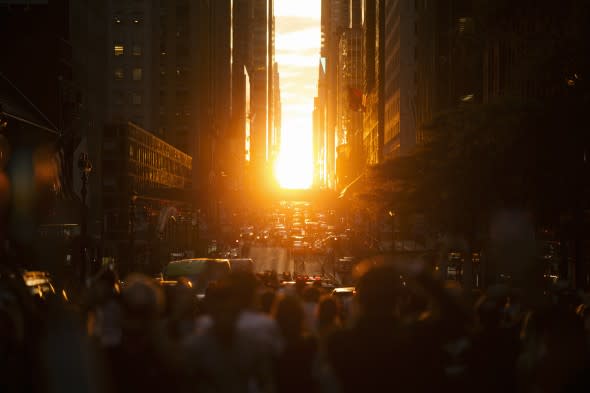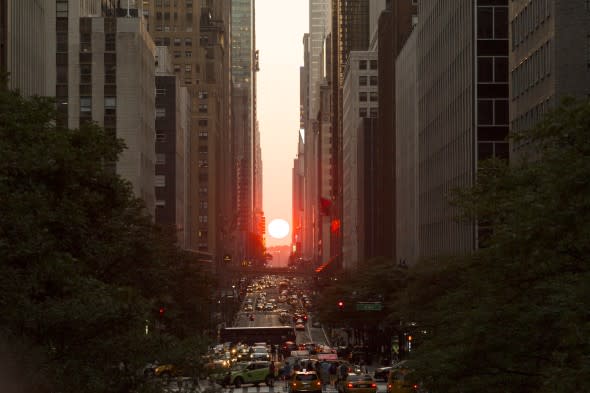Manhattanhenge 2018: How to view New York City's famed sunset
Four times every year, New Yorkers and tourists alike come together on the streets of Manhattan to view one of the most anticipated sunsets of the year, known as Manhattanhenge.
Taking place twice every May and July, the phenomenon happens when the sunset perfectly aligns between the buildings on some east and westward roads due to Manhattan's grid system.
The result is a very vibrant glow that illuminates the north and south sides of the borough's towering buildings.
The event always happens around the same dates each year.

(Photo/zxvisual/Getty Images)
This year, residents and visitors in the Big Apple will be able to see half of the sun on May 29 at 8:13 p.m. and July 13 at 8:21 p.m.
However, the real show will be on May 30 at 8:12 p.m. and July 12 at 8:20 p.m. On those days, the full sun will be visible.
The best places to catch a clear view of the sun are 14th, 23rd, 34th, 42nd and 57th streets.
Those who are in the city on May 29 or 30 should be in luck in terms of the weather conditions.
"It's a good thing actually that we're looking at [those days] rather than a few days earlier because it looks like they are going to go through a cloudy stretch," AccuWeather Senior Meteorologist Dave Dombek said.
Dombek added the weather on both days would be a mix of clouds and sun, leaning more towards sunshine during the day.

The sun sets between the street grid of midtown 42nd Street in Manhattan, New York City. (Photo/zxvisual/Getty Images)
"At this juncture, it looks pretty good, as far as the whole sun situation goes," Dombek said. "If that sequence was a day or two earlier, there would be a lot more clouds around."
The term "Manhattanhenge" was first coined by astrophysicist Neil deGrasse Tyson in a blog post he wrote in 2002.
Back then, the two dates perfectly coincided with Memorial Day and the Major League Baseball's All Star break.
"Future anthropologists might conclude that, via the Sun, the people who called themselves Americans worshiped War and Baseball," deGrasse Tyson wrote on his blog.
